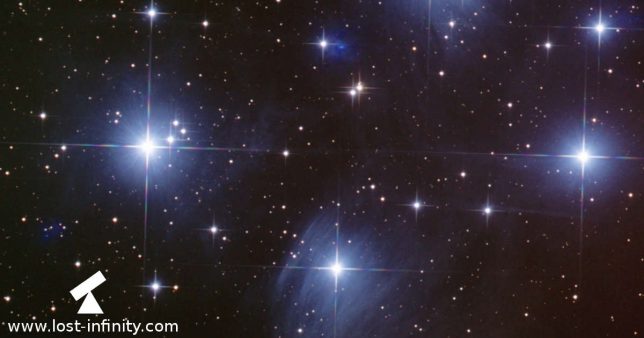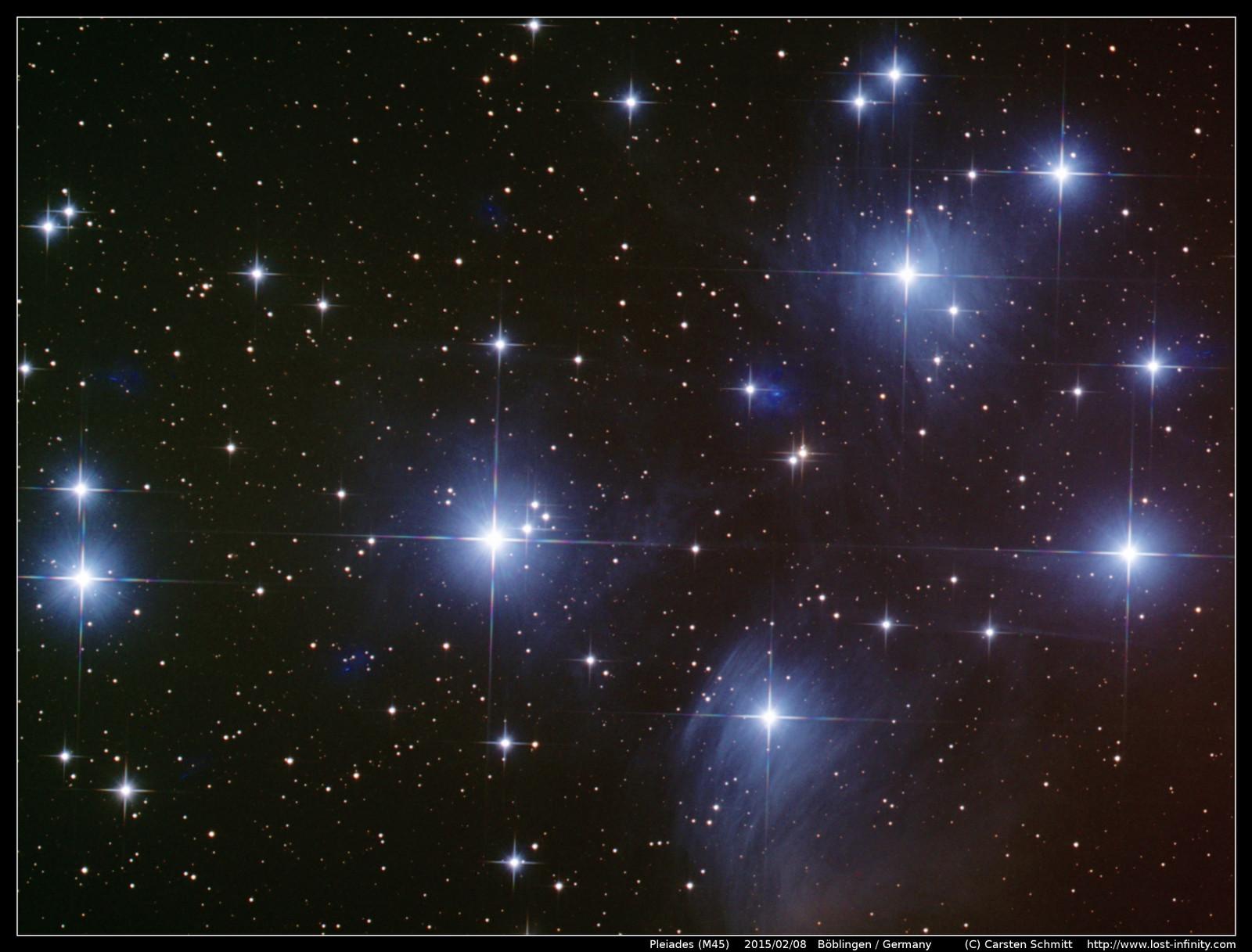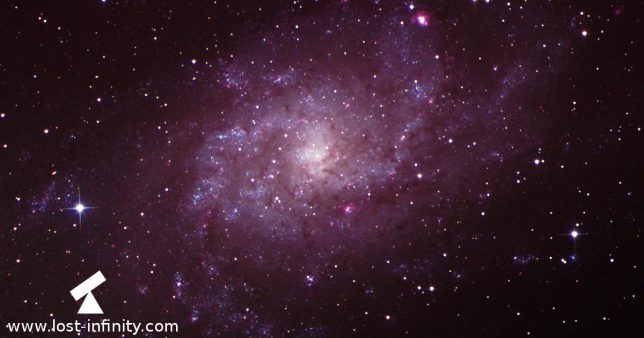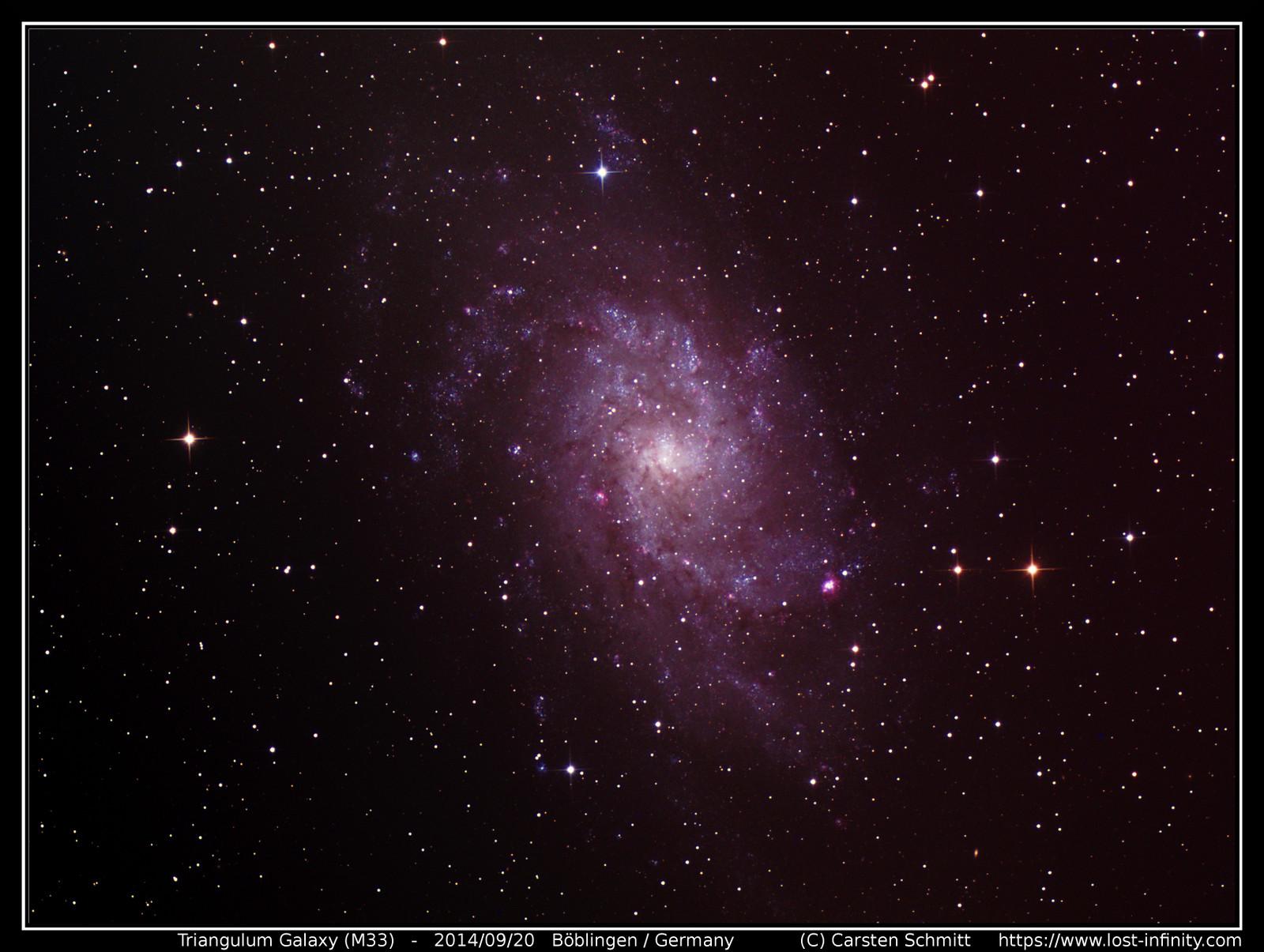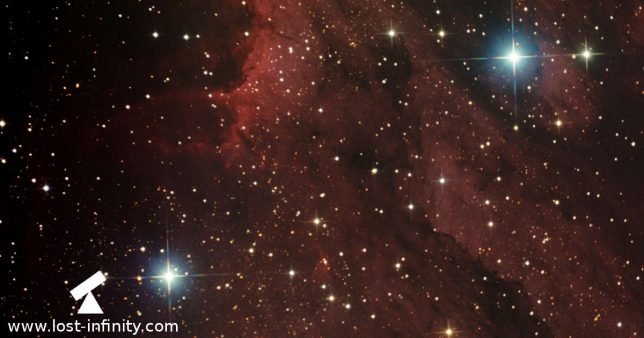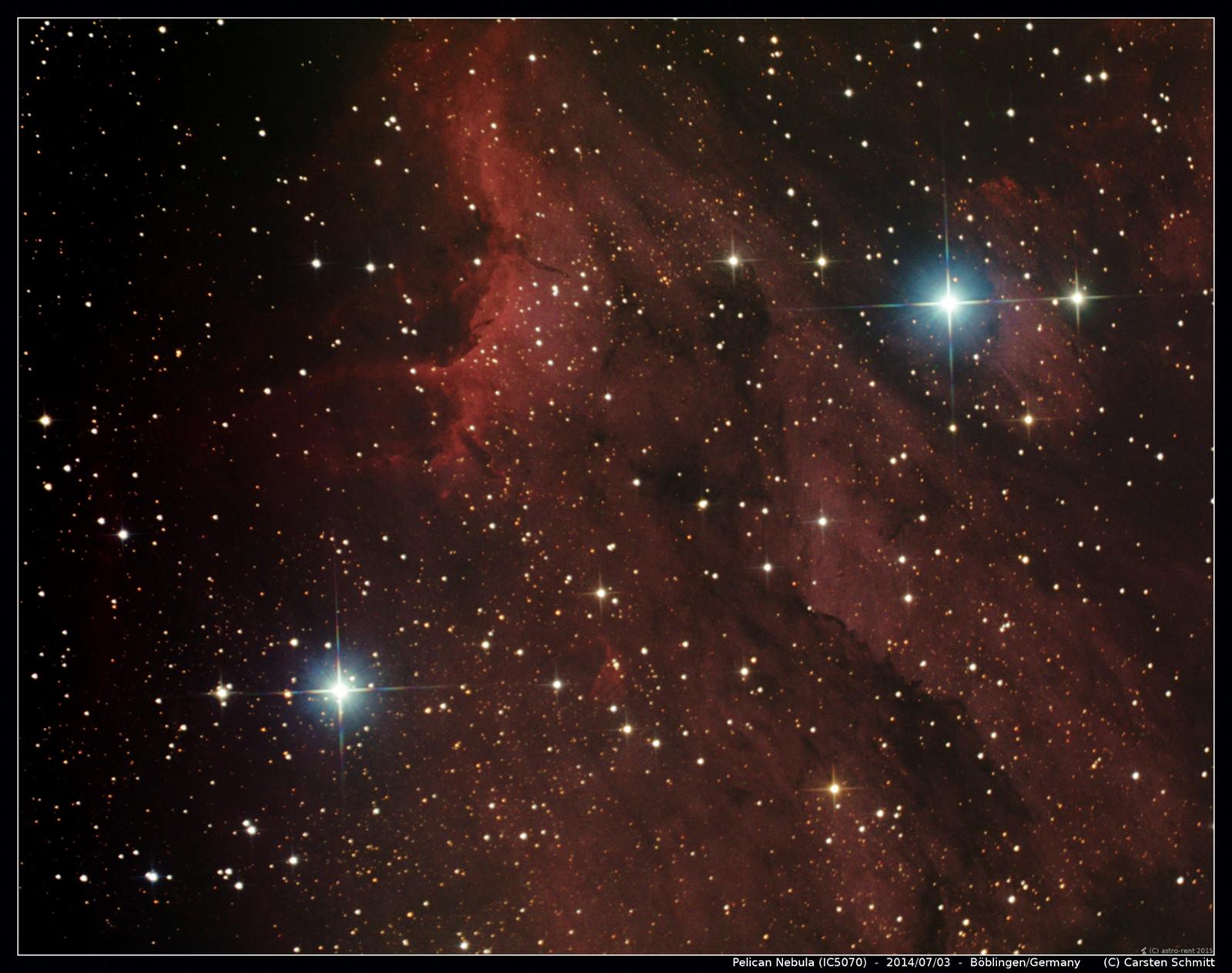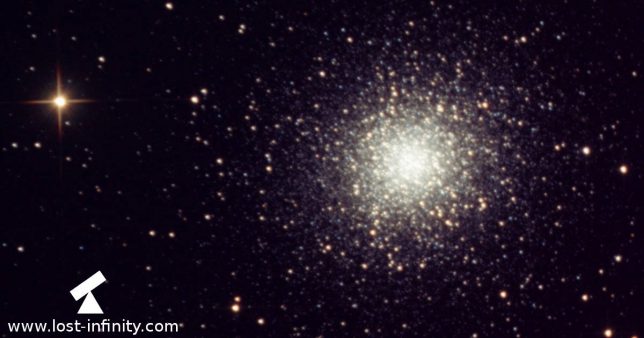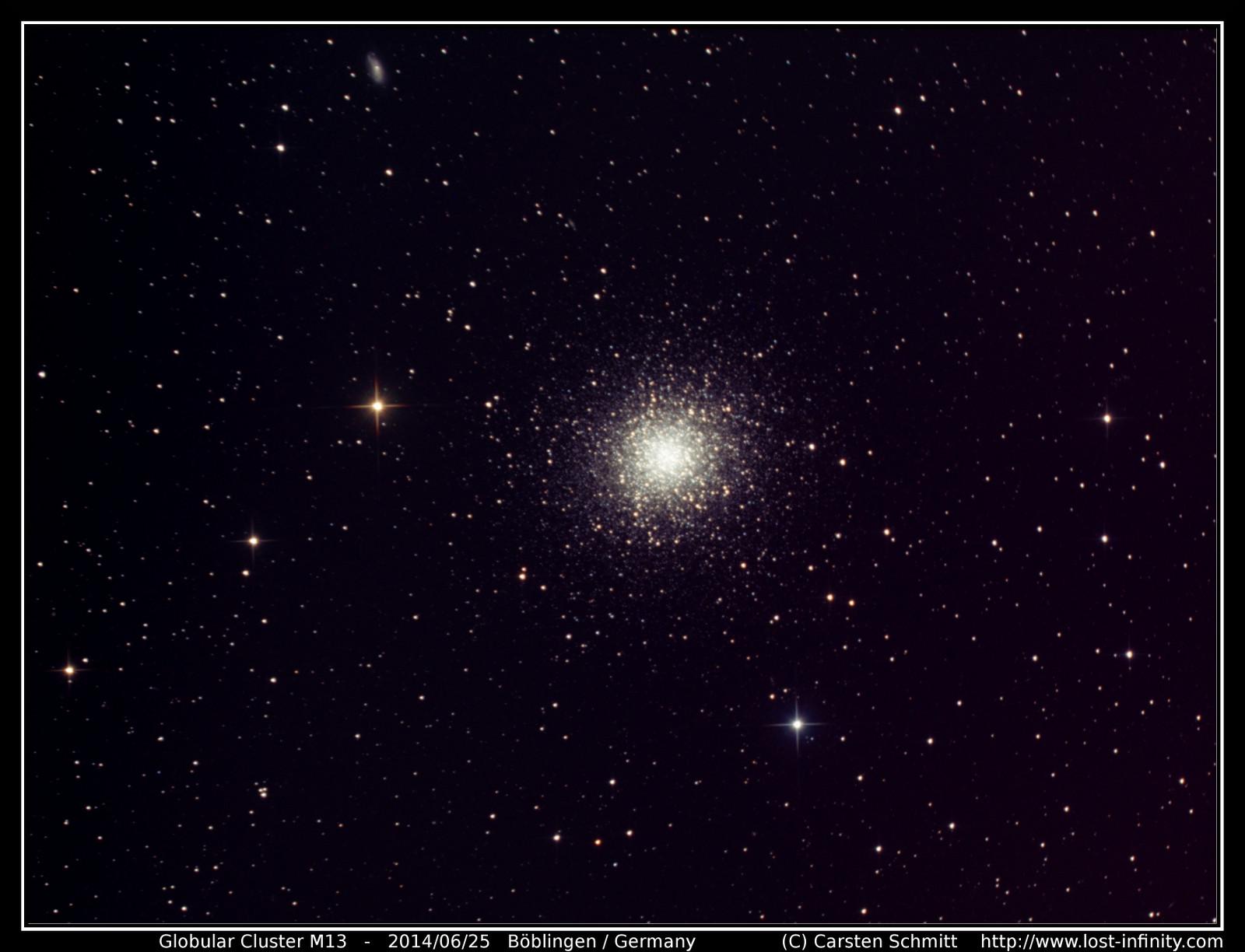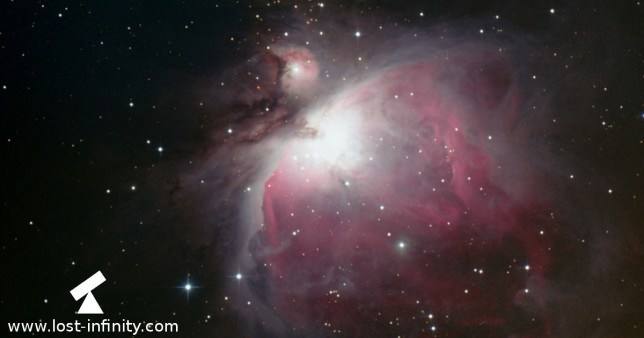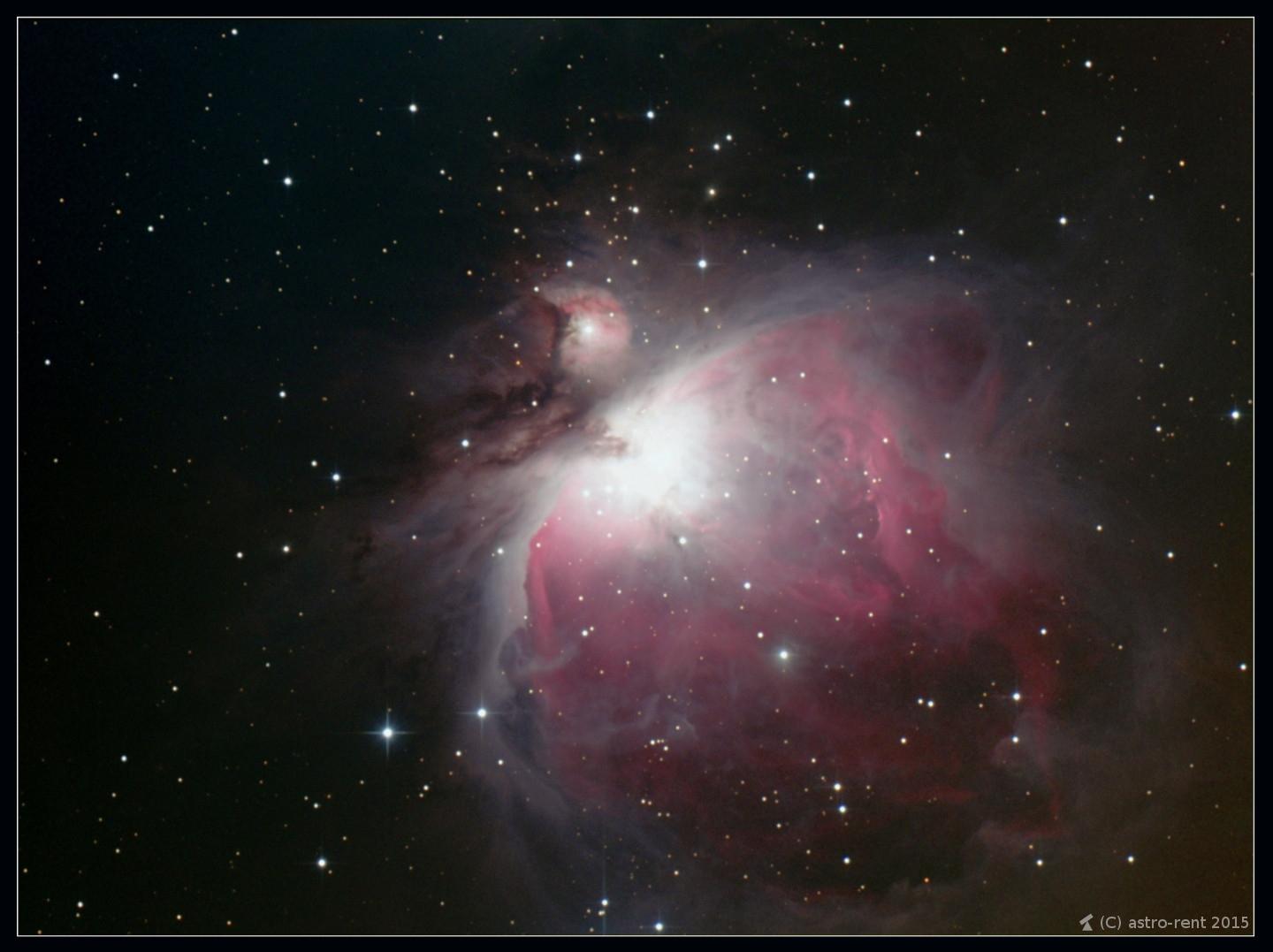The Pleiades (M45) are an open star cluster which can be seen in the night sky without a telescope. They are also known as the Seven Sisters. I have imaged M45 three years ago. It was actually one of the first objects I ever photographed.
The image is also available in full resolution.
 | Date | 2015/02/08 |
 | Location | Böblingen / Germany |
 | Object | Pleiades (M45) |
 | Camera | Atik383L+ |
 | Guiding | yes, DMK31AU03.AS via OAG |
 | Telescope | 8" GSO Newtonian |
 | Barlow lens | none |
 | Mount | EQ6Syntrek |
 | Cooling | -15°C |
 | Luminance | 8x 400s, bin: 1x1 |
 | Red | 6x 150s, bin: 2x2 |
 | Green | 6x 150s, bin: 2x2 |
 | Blue | 6x 150s, bin: 2x2 |
 | Dark | 5x |
 | Flat | 10x |
 | Total exposure | ~1h38m |
Clear skies!
Last updated: June 20, 2022 at 7:43 am




























